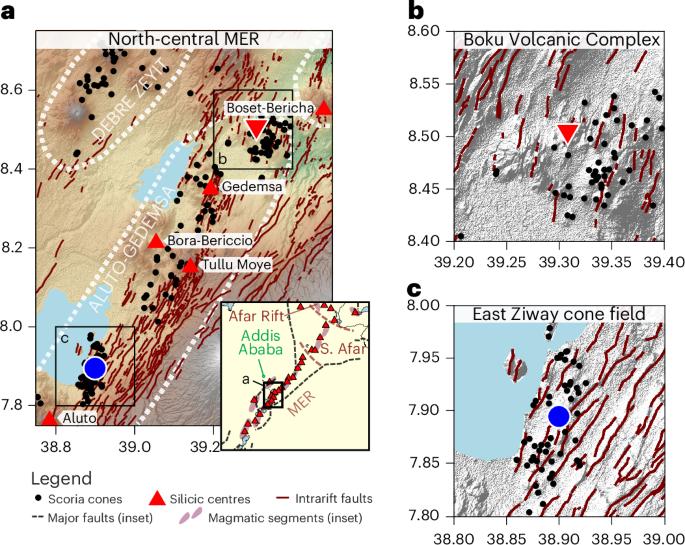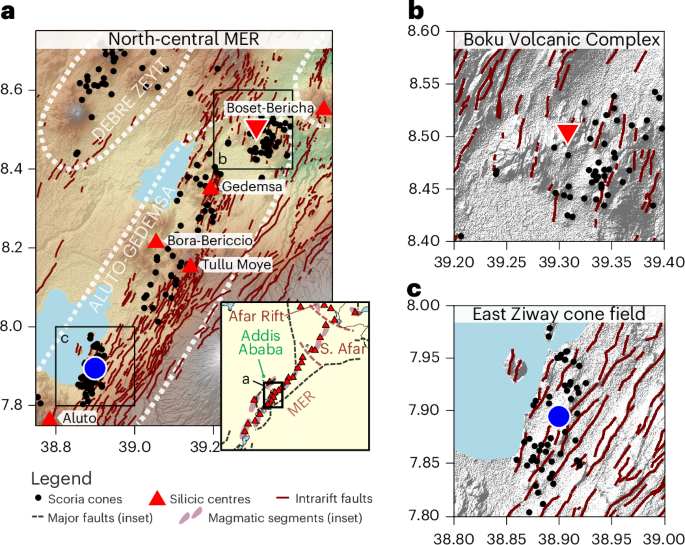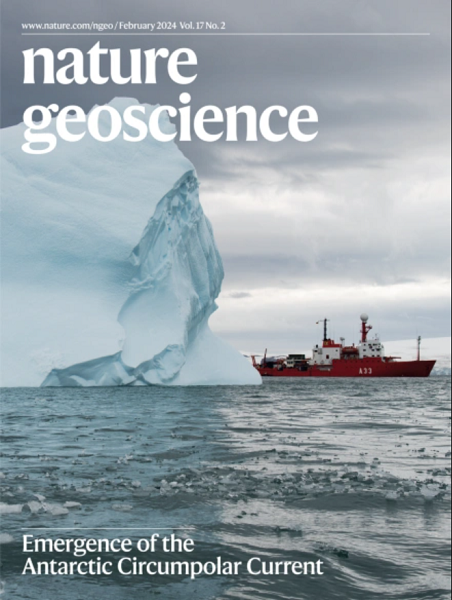埃塞俄比亚主裂谷下岩浆的快速地壳传递
IF 16.1
1区 地球科学
Q1 GEOSCIENCES, MULTIDISCIPLINARY
引用次数: 0
摘要
随着大陆裂谷向岩石圈破裂和洋脊的形成演化,玄武岩岩脉侵入超越构造断裂成为地壳上伸展的主要机制。因此,裂谷壳内的岩浆构造控制着岩浆的可用性和上升路径,在大陆型裂谷向海洋型裂谷的转变中起着至关重要的作用。本文采用橄榄石Fe-Mg互扩散时间测定法对埃塞俄比亚主裂谷(一个中等构造成熟度的大陆裂谷)下岩浆上升的动力学和时间尺度进行了约束。我们发现岩浆在地壳中快速移动,在侵入性喷发事件发生前几周到几个月才补充到地壳中部储层。这种上升的时间尺度与更成熟的裂谷活跃期岩壁侵入复发的时间尺度相当;因此,我们推断埃塞俄比亚主裂谷的伸展活动可能是由深部岩浆供应介导的。我们提出的埃塞俄比亚主裂谷的岩浆构造和岩浆上升速率表明,在岩石圈大幅变薄之前,大陆裂谷就可以发育成熟的岩浆管道系统,能够有效地将熔体输送到地壳上岩脉。本文章由计算机程序翻译,如有差异,请以英文原文为准。


Rapid crustal transit of magmas beneath the Main Ethiopian Rift
As continental rifts evolve towards lithospheric break-up and the formation of an ocean ridge, basaltic dyke intrusion becomes the dominant mechanism of upper-crustal extension, surpassing tectonic faulting. The magmatic architecture within the rifting crust, which governs the availability and pathways of ascending magmas, therefore has a crucial role in the transition from continental- to oceanic-style rifting. Here we use olivine Fe–Mg interdiffusion chronometry to constrain the dynamics and timescales of magma ascent beneath the Main Ethiopian Rift, a continental rift of intermediate tectonic maturity. We find that magmas move rapidly through the crust, replenishing mid-crustal reservoirs only weeks to months before intrusive-eruptive events. Such ascent timescales are comparable to those of dyke intrusion recurrence observed during active phases at more mature rifts; hence, we infer that extensional activity in the Main Ethiopian Rift is probably mediated by the supply of magma from depth. The magmatic architecture and magma ascent rates we propose for the Main Ethiopian Rift indicate that well-established magma plumbing systems, capable of efficiently delivering melts to feed upper-crustal dykes, can develop in a continental rift even before substantial lithospheric thinning has occurred. Magmas beneath the Main Ethiopian Rift ascend through the crust on timescales of only weeks to months, indicating that, during continental rifting, a magmatic plumbing system can be well established before the lithosphere has thinned.
求助全文
通过发布文献求助,成功后即可免费获取论文全文。
去求助
来源期刊

Nature Geoscience
地学-地球科学综合
CiteScore
26.70
自引率
1.60%
发文量
187
审稿时长
3.3 months
期刊介绍:
Nature Geoscience is a monthly interdisciplinary journal that gathers top-tier research spanning Earth Sciences and related fields.
The journal covers all geoscience disciplines, including fieldwork, modeling, and theoretical studies.
Topics include atmospheric science, biogeochemistry, climate science, geobiology, geochemistry, geoinformatics, remote sensing, geology, geomagnetism, paleomagnetism, geomorphology, geophysics, glaciology, hydrology, limnology, mineralogy, oceanography, paleontology, paleoclimatology, paleoceanography, petrology, planetary science, seismology, space physics, tectonics, and volcanology.
Nature Geoscience upholds its commitment to publishing significant, high-quality Earth Sciences research through fair, rapid, and rigorous peer review, overseen by a team of full-time professional editors.
 求助内容:
求助内容: 应助结果提醒方式:
应助结果提醒方式:


